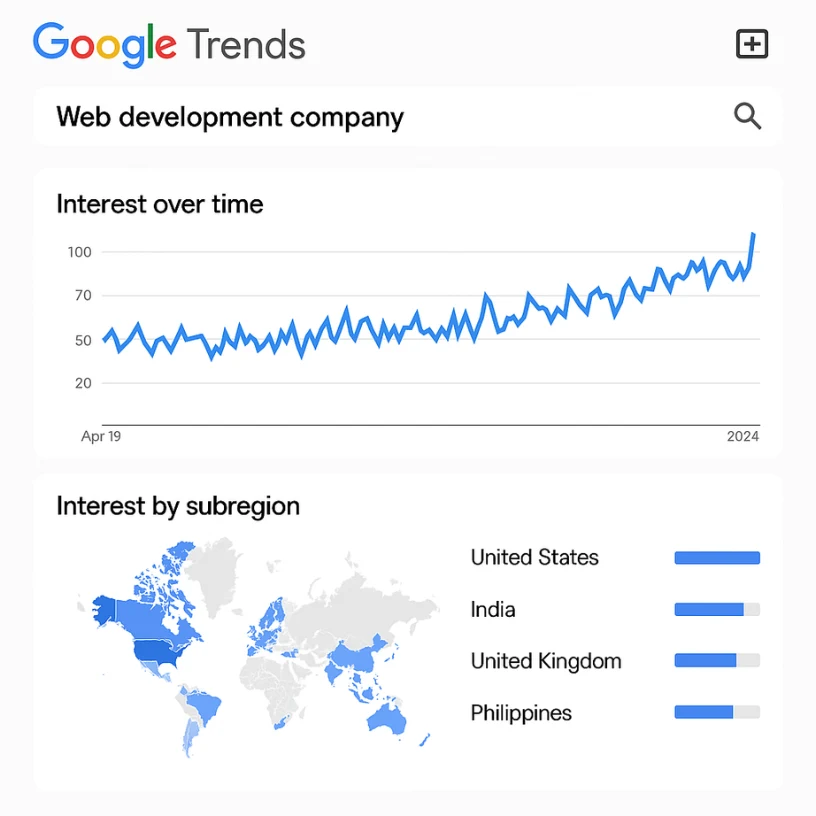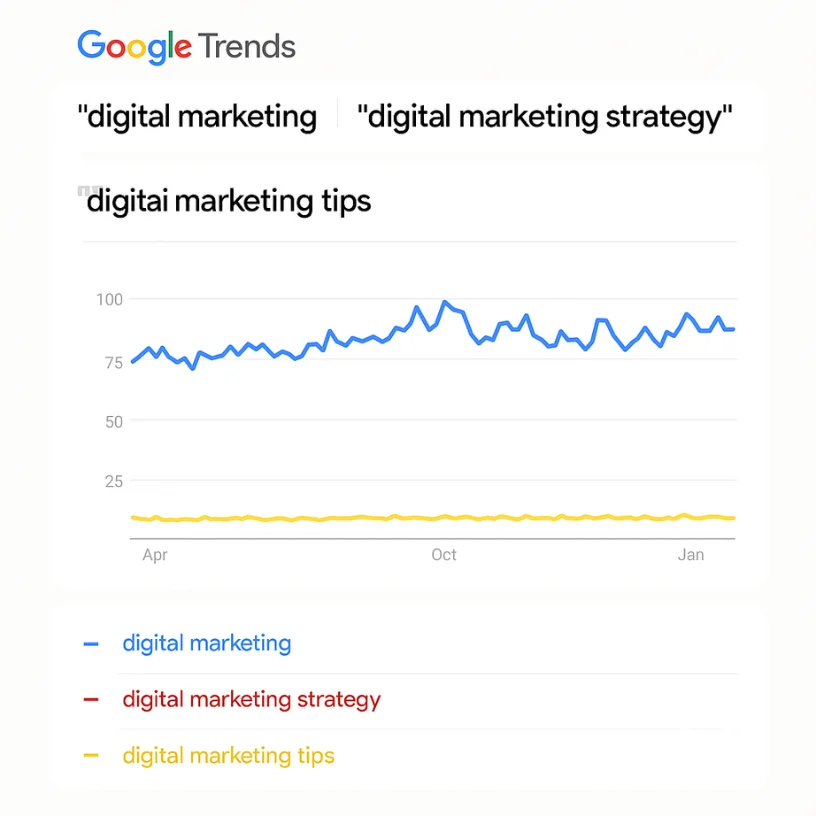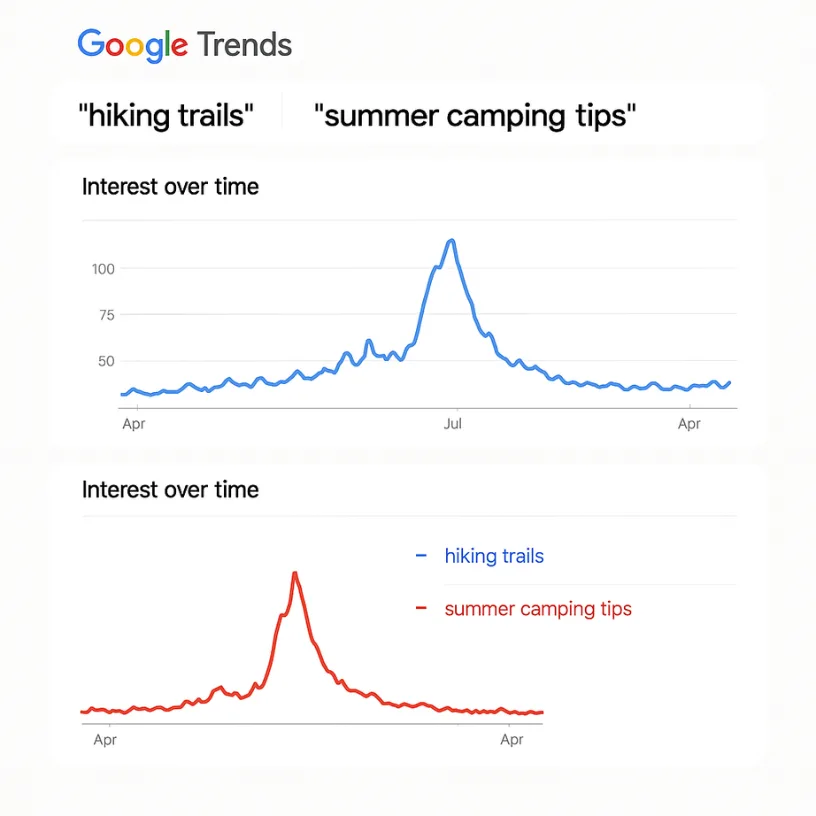How To Use Google Trends For SEO: Everything You Need To Know

Google Trends is a tool that enables you to find the popularity of search queries across different regions and languages. By making use of this tool, you can be in tune with what’s currently trending and optimize your SEO strategy according to that.
It is a free tool from Google that provides information and graphs on the popularity of particular searches in Google and YouTube.
Google first introduced Google Trends in 2006. The newest version of Google Trends was introduced in March 2023.
In this blog, we will tell you step by step how to make the most of Google Trends for SEO, together with some tips and visual aids.
So, My Friends! Without any delay, let’s get into it!
Key Takeaways:
With these strategies, you can make the most of Google Trends to attract traffic and enhance your website’s SEO performance. |
Understanding Google Trends
Google Trends provides an understanding of the search volume of keywords, how they change their position over time, and where they are most searched. It can help you find:
- Trending topics
- Long-tail keywords
- Seasonal patterns in your niche
All of the above are important for making relevant and SEO-friendly content.
Example: Suppose you are writing a blog about Web Development. By entering the keyword “Web Development Company” into Google Trends, you will understand how its popularity has grown over time and which regions are currently showing interest in this topic.

How to Access Google Trends
- Go to Google Trends.
- In the search bar, type in the keyword or topic you are interested in.
You will get the graphs and data showing interest over time, related queries, and top regions where the term is searched.
Choosing the Right Keywords
Once you have opened Google Trends, you can use it to fine-tune your keyword strategy. Let’s look at how:
Keyword Comparison: You can compare different keywords simultaneously to find which one is more popular.
Regional Insights: Find where in the world or country your target keywords are most sought-after. This can help you concentrate on the appropriate location-based content.
Related Queries: Check out the related queries section to determine keywords that are popular together with your primary keyword.
Example: If your focus is on the keyword “Digital marketing,” you can see if connected keywords like “Digital marketing strategy” or “Digital marketing tips” are also trending, and then create content targeting these keywords.

Identifying Seasonal Trends
Google Trends is best for finding out seasonal fluctuations in search volume. This can help you create timely content that aligns with your audience at the right time.
Example: Suppose you are writing a blog about outdoor activities. By making use of Google Trends, you can observe when search interest in keywords such as “hiking trails” or “summer camping tips” peaks, enabling you to plan your content calendar around these times.

Content Creation Tips Based on Google Trends
After collecting information from Google Trends, it’s time to make content around the most relevant topics. Here are a few techniques:
Write About Trending Topics: If you observe a growing trend, create content around that topic before it becomes overflowed. Google Trends will show you the “interest over time” graph, so you can forecast when the trend will go on top.
Incorporate Long-Tail Keywords: By determining long-tail keywords in the “related queries” section, you can enhance your content for less competitive search terms that still attract traffic.
Focus on Local SEO: If you observe regional interest in a keyword, you can make localized content to attract traffic from that area.
Let’s understand this by an example, suppose you have typed “summer camping” in Google Trends, then in the image below, you will notice what it has to offer:

Optimizing Your Blog for SEO Using Trends
Once you have determined the appropriate keywords, it’s time to optimize your blog post for SEO. Here are a few steps you are required to follow:
Include Keywords in Key SEO Areas: Use the chosen keywords in the title, headers (H1, H2), URL, and meta description.
Use Related Keywords: Incorporate the trending secondary keywords you found in Google Trends throughout your content.
Improve User Experience: Google always gives priority to the content that is useful, engaging and easy to navigate. Always create top-quality and valuable content that answers user questions.
Track Performance with Google Analytics
Once you have made your content live, monitor how well it performs by making use of Google Analytics. This will help you understand if your use of Google Trends data has converted into more traffic, higher engagement, or improved search rankings.
FAQs
How to find keywords from Google Trends?
As you enter your query, you will get a drop-down list. At the top is the precise search term you entered. Below, you will come across a list of topics that Google Trends considers you may be trying to research. If you see the applicable topic in the drop-down list, click on it to see the data.
What is the difference between Google Trends and Google Insights?
Dissimilar to Google Trends, Google Insights for Search offers a visual representation of regional interest on a country’s map. It represents top searches and increasing searches that may aid with keyword research.
Can Google Trends display the number of searches?
Google Trends’ data should be understood and regarded as an indicator of the line of interest in a specific keyword or phrase. It does not display the number of searches in place, but it shows whether it is more or less popular.
Conclusion: The Power of Google Trends for SEO
Using Google Trends appropriately can help you stay ahead of the competition, tap into trending topics, and create SEO-friendly content that suits your audience. By being watchful of emerging trends and optimizing your content around them, you’ll improve your chances of ranking higher in search engines and driving more organic traffic.
